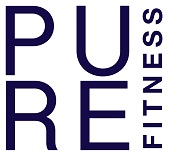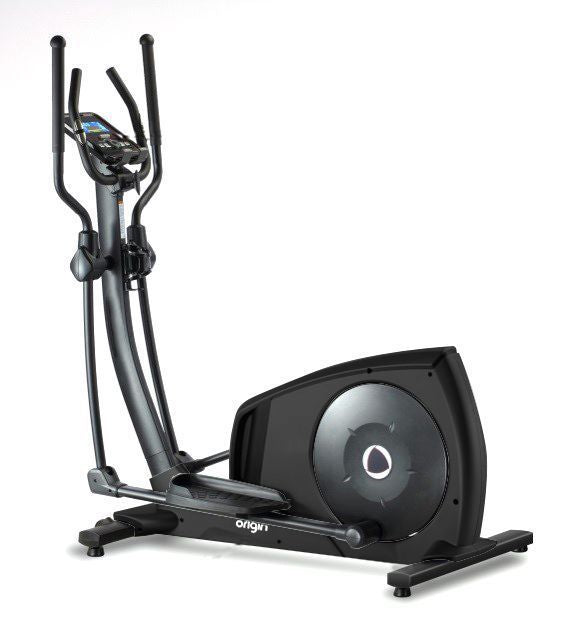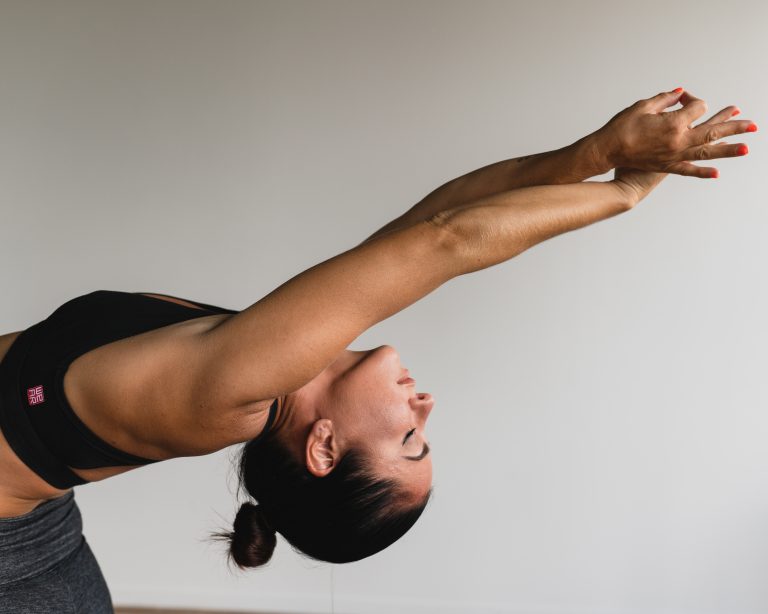Are you tired of slouching and experiencing back pain? If so, then you’re in the right place! This article will provide you with valuable insights on how to improve your posture through exercise. Say goodbye to that hunched position and hello to an upright and confident stance. By incorporating simple exercises into your daily routine, you’ll soon be on your way to achieving better posture and all the benefits that come with it. So, let’s get started on this journey towards a healthier you!
Table of Contents
Toggle1. The Importance of Good Posture
Good posture is not just about looking poised and confident; it plays a crucial role in maintaining overall health and well-being. When you maintain proper posture, you can reap a wide range of benefits, including reduced muscle strain, improved breathing and digestion, increased energy levels, and enhanced athletic performance. On the other hand, poor posture can have serious consequences, such as increased risk of musculoskeletal disorders, chronic pain, and even compromised organ function. It is essential to understand the importance of good posture and take proactive measures to improve and maintain it.
1.1 Benefits of Good Posture
Maintaining good posture throughout the day offers numerous advantages for your physical and mental well-being. Firstly, it helps to correctly align your spine, reducing the strain on your muscles and joints. Proper alignment also promotes better circulation, ensuring that essential nutrients are properly distributed throughout your body. Moreover, good posture enables your lungs to receive an adequate supply of air, facilitating optimal breathing and boosting your overall energy levels.
In addition to the physical benefits, maintaining good posture can also have a positive impact on your mental state. Studies have shown that sitting and standing with proper alignment improves mood, increases self-confidence, and enhances cognitive function. By maintaining good posture, you project an image of confidence and professionalism, which can positively influence various aspects of your life, including career opportunities and personal relationships.
1.2 Consequences of Poor Posture
Neglecting your posture can lead to various adverse consequences for your health and overall quality of life. Poor posture often results in increased stress on the muscles and joints, leading to chronic pain and discomfort. Over time, this can develop into musculoskeletal disorders, such as neck and back pain, spinal misalignments, and herniated discs. Additionally, poor posture can lead to decreased flexibility and limited range of motion, affecting your ability to perform everyday activities and participate in physical exercise.
Furthermore, poor posture can have detrimental effects on your organ function. When your spine is not properly aligned, it can compress vital organs, compromising their ability to function optimally. This can lead to digestive issues, reduced lung capacity, and decreased circulation, all of which can have long-term implications for your overall health.
2. Understanding Correct Posture
To improve and maintain good posture, it is essential to understand the key components of proper alignment. Proper spine alignment, neutral pelvis position, and proper shoulder alignment all contribute to maintaining an upright and balanced posture.
2.1 Spine Alignment
The spine serves as the foundation of your posture. When your spine is properly aligned, it forms a gentle curve resembling the letter “S” from the side. This alignment allows your body weight to be evenly distributed, reducing strain on any particular area. To achieve proper spine alignment, ensure that your head is positioned directly above your shoulders, your shoulders are aligned with your hips, and your hips are in line with your ankles.
2.2 Neutral Pelvis Position
The pelvis plays a crucial role in maintaining good posture. To achieve a neutral pelvis position, imagine a bowl filled with water resting on top of your pelvis. You want to keep the bowl level, neither tilting forward nor backward. This position optimizes alignment, prevents excessive strain on the lower back, and allows for proper engagement of the core muscles.
2.3 Proper Shoulder Alignment
Proper shoulder alignment involves positioning your shoulders in a relaxed and neutral position without rounding forward or excessively pulling back. Imagine lengthening your spine and gently drawing your shoulder blades down and back, allowing your chest to open up. This alignment helps to counteract the forward head posture commonly associated with poor posture and promotes better breathing and shoulder function.
3. Identifying Postural Issues
To effectively improve your posture, it is crucial to identify any postural problems you may have. Common postural problems include forward head posture, rounded shoulders, excessive arching of the lower back, and anterior pelvic tilt. By recognizing these issues, you can take targeted measures to address them and improve your overall posture.
3.1 Common Postural Problems
- Forward head posture: This occurs when your head protrudes forward from its ideal alignment with the spine, often caused by spending long hours looking down at electronic devices.
- Rounded shoulders: Rounded shoulders involve the forward rotation of the shoulder joints, typically resulting from poor sitting posture and weak upper back muscles.
- Excessive arching of the lower back: Known as hyperlordosis, this postural problem involves an excessive inward curvature of the lower back, often caused by weak abdominal muscles and tight hip flexors.
- Anterior pelvic tilt: Anterior pelvic tilt is characterized by the forward rotation of the pelvis, causing an exaggerated curve in the lower back. This condition is often associated with prolonged sitting and weak hip and glute muscles.
3.2 Assessing Your Posture
To assess your posture, stand in front of a mirror and observe yourself from the side. Take note of any deviations from the ideal alignment and identify which postural problems you may have. It can also be helpful to have a friend or family member take a picture of you from the side in both standing and seated positions. These visual aids can provide valuable insights into your posture and guide your efforts to improve it.
4. Exercises to Improve Posture
Exercises targeting specific muscle groups can help correct postural imbalances and strengthen the muscles necessary for maintaining good posture. Focus on exercises that strengthen the core, stretch the chest and shoulders, strengthen the back, and align the spine.
4.1 Strengthening the Core
A strong core provides stability and support for maintaining good posture. Two effective exercises to strengthen the core are the plank and the bridge.
4.1.1 Plank
The plank is a simple yet challenging exercise that targets the entire core. Start by assuming a push-up position, resting on your forearms instead of your hands. Engage your core muscles, keeping your body in a straight line from head to heels. Hold this position for as long as you can while maintaining proper form.
4.1.2 Bridge
The bridge exercise targets the glutes and the core muscles. Lie on your back with your knees bent and feet flat on the ground. Engage your glutes and core, and lift your hips off the ground until your body forms a straight line from your shoulders to your knees. Hold this position for a few seconds, then lower your hips back to the ground and repeat.
4.2 Stretching the Chest and Shoulders
Stretching the chest and shoulders can help counteract the effects of rounded shoulders and forward head posture. Two effective stretches for these areas are the doorway stretch and the shoulder blade squeeze.
4.2.1 Doorway Stretch
Stand facing a doorway with your arms outstretched, palms resting on the door frame at shoulder height. Step forward with one foot, allowing your chest to lean forward. You should feel a stretch across your chest and the front of your shoulders. Hold this stretch for 20-30 seconds, then release and repeat.
4.2.2 Shoulder Blade Squeeze
Stand tall with your arms by your sides. Gently squeeze your shoulder blades together, focusing on pulling them downward. Hold this position for a few seconds, then release. Repeat this exercise several times throughout the day to strengthen the muscles responsible for proper shoulder alignment.
4.3 Strengthening the Back
Strengthening the muscles in your upper back can help counteract rounded shoulders and improve overall posture. Two effective exercises for strengthening the back are the superman pose and the bird dog exercise.
4.3.1 Superman Pose
Lie facedown on the ground with your arms extended in front of you. Lift your chest, arms, and legs off the ground simultaneously, creating a “flying” position. Hold this pose for a few seconds, then lower back down and repeat.
4.3.2 Bird Dog Exercise
Start on your hands and knees, with your wrists directly under your shoulders and your knees under your hips. Extend your right arm forward and your left leg backward, keeping them parallel to the ground. Engage your core to maintain stability and hold this position for a few seconds. Then, lower your arm and leg back down and repeat on the other side.
4.4 Aligning the Spine
Proper alignment of the spine is crucial for maintaining good posture. Two effective stretches for aligning the spine are the cat-cow stretch and child’s pose.
4.4.1 Cat-Cow Stretch
Start on your hands and knees, with your wrists directly under your shoulders and your knees under your hips. Inhale and arch your back, lowering your belly towards the floor and lifting your tailbone and head upwards (cow pose). Exhale and round your back, tucking your tailbone and chin towards your chest (cat pose). Alternate between these two positions, moving with your breath.
4.4.2 Child’s Pose
Kneel on the floor with your toes touching and your knees hip-width apart. Slowly lower your hips towards your heels, stretching your arms forward and resting your forehead on the ground. This pose helps release tension in the spine and promotes relaxation.
5. Incorporating Correct Posture into Daily Activities
Maintaining good posture goes beyond performing specific exercises; it involves integrating proper alignment into your everyday activities. By being mindful of your posture during sitting, standing, and lifting heavy objects, you can further strengthen your postural muscles and promote long-lasting improvements.
5.1 Sitting with Good Posture
When sitting, it is crucial to maintain good posture to avoid straining your back and neck. Sit with your back against the chair, ensuring that your feet are flat on the ground. Keep your shoulders relaxed and avoid slouching. If necessary, use a cushion or lumbar roll to support the natural curve of your lower back.
5.2 Standing Tall
Whether you are standing for prolonged periods or walking, it is essential to stand tall and maintain proper alignment. Align your ears, shoulders, and hips in a straight line, engaging your core muscles to support your spine. Avoid locking your knees and distribute your weight evenly between both feet.
5.3 Lifting Heavy Objects with Proper Form
When lifting heavy objects, it is crucial to use proper form to protect your back and maintain good posture. Bend your knees and hinge at your hips, keeping your back straight. Lift the object close to your body, using your leg muscles instead of straining your back. Avoid twisting while lifting and, if necessary, ask for assistance if the object is too heavy.
6. Using Posture Correcting Devices
In addition to exercises and mindful posture habits, posture correcting devices can provide additional support and reminders to maintain proper alignment.
6.1 Posture Corrector Braces
Posture corrector braces are designed to gently pull your shoulders back and align your spine. They can be particularly beneficial for individuals with chronic postural problems or those who spend a significant amount of time sitting or standing in a specific position. However, it is essential to use posture corrector braces selectively and consult with a healthcare professional for guidance.
6.2 Ergonomic Chairs and Equipment
Investing in ergonomic chairs and equipment can significantly contribute to maintaining good posture throughout the day. Ergonomic chairs provide proper support for the spine, promoting better alignment and reducing the risk of postural problems. Additionally, ergonomic keyboards, mice, and standing desks can help create a more ergonomic and posture-friendly work environment.
7. Seeking Professional Help
If you are struggling to improve your posture despite your efforts, seeking professional help can provide valuable insights and personalized guidance.
7.1 Physical Therapy
Physical therapy can be highly beneficial for individuals with chronic postural problems or those recovering from an injury. A physical therapist can assess your posture, identify any underlying issues, and develop a customized exercise program focused on improving your specific postural imbalances. They can also provide manual therapy techniques, such as joint mobilizations and soft tissue release, to further enhance your progress.
7.2 Chiropractic Care
Chiropractors specialize in identifying and correcting spinal misalignments, which can significantly impact your posture. Through spinal adjustments and manipulations, chiropractors can help realign your spine, relieve tension in your muscles and joints, and promote better posture and overall well-being.
7.3 Yoga and Pilates Classes
Yoga and Pilates classes are excellent options for individuals seeking to improve their posture through holistic and mind-body practices. These classes often focus on strengthening the core, improving flexibility, and promoting body awareness, all of which contribute to better posture. Additionally, trained instructors can provide guidance and modifications based on your individual needs, ensuring that you practice with proper alignment and form.
In conclusion, improving and maintaining good posture is essential for your overall health and well-being. By understanding the benefits of good posture, identifying postural issues, engaging in specific exercises, incorporating correct alignment into daily activities, and seeking professional help when necessary, you can make significant strides towards improving your posture and enjoying the numerous benefits that come with it. So, start practicing good posture today and watch how it positively impacts your life.







